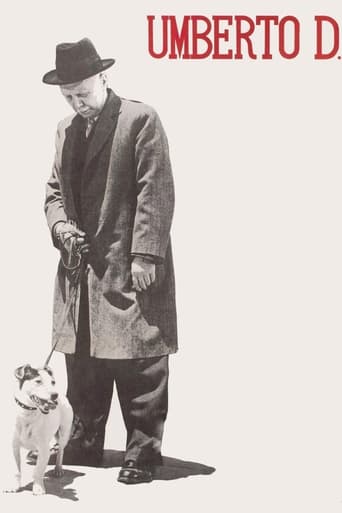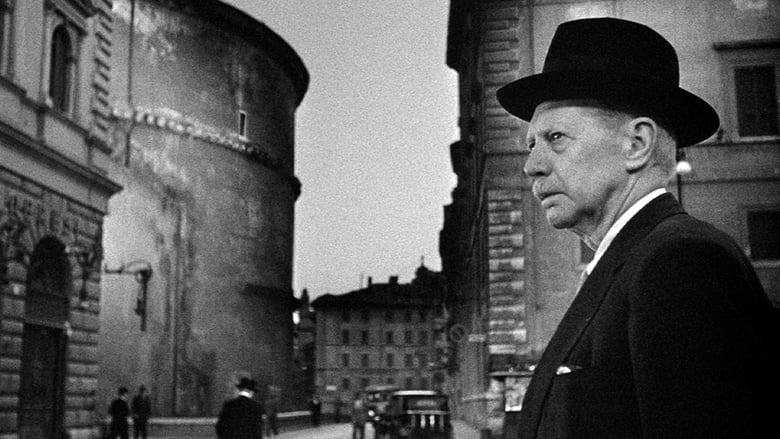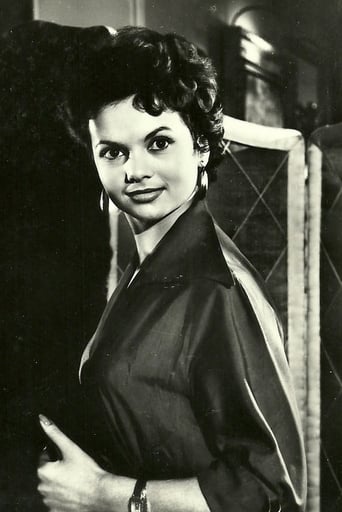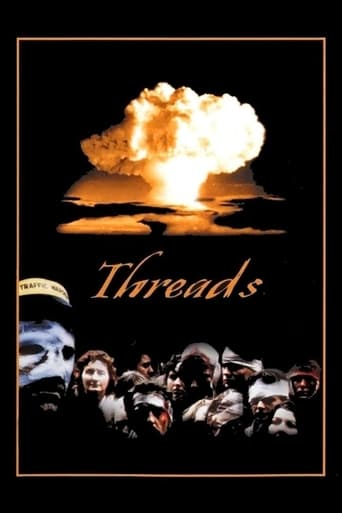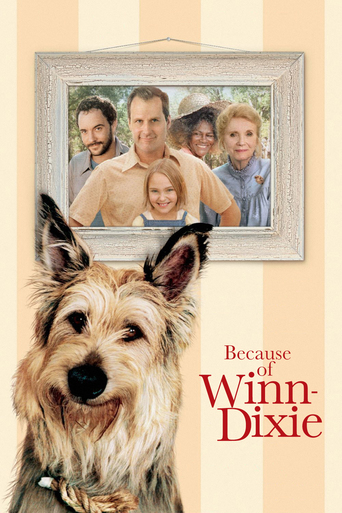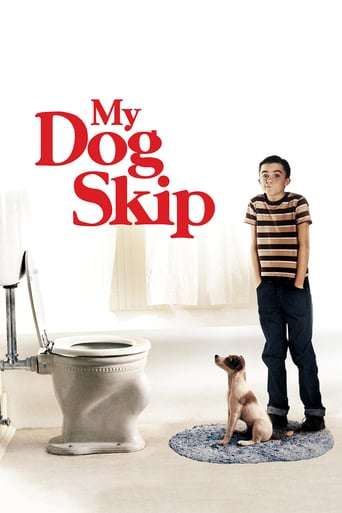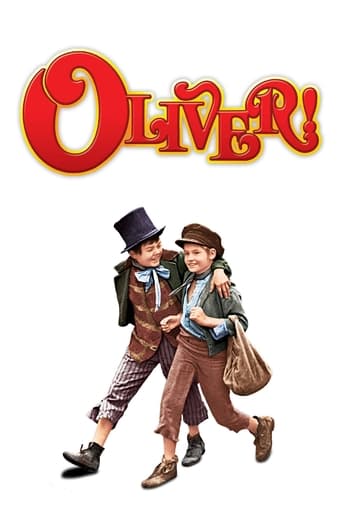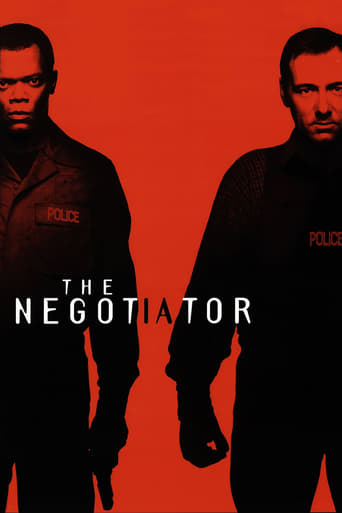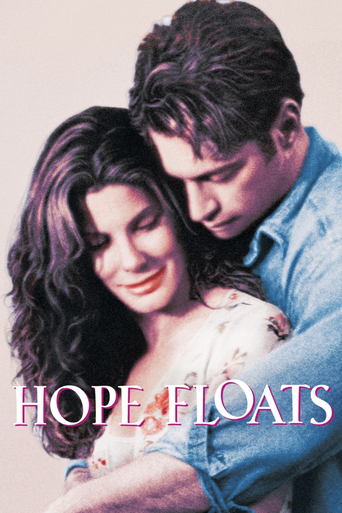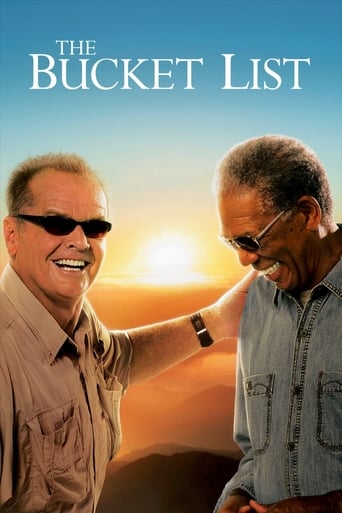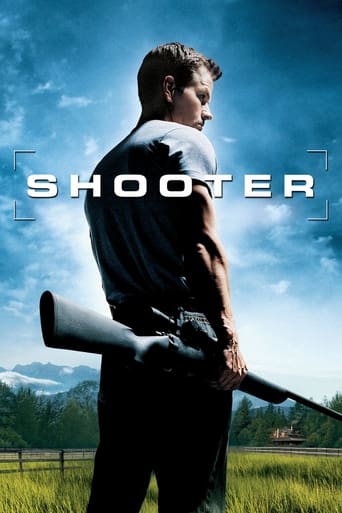Umberto D. (1952)
When elderly pensioner Umberto Domenico Ferrari returns to his boarding house from a protest calling for a hike in old-age pensions, his landlady demands her 15,000-lire rent by the end of the month or he and his small dog will be turned out onto the street. Unable to get the money in time, Umberto fakes illness to get sent to a hospital, giving his beloved dog to the landlady's pregnant and abandoned maid for temporary safekeeping.
Watch Trailer
Cast


Similar titles
Reviews
Pretty Good
Good story, Not enough for a whole film
As Good As It Gets
Admirable film.
Called by some the best Italian neo-realist film of all time, "Umberto D." is a scathing critique of post-WWII Italy and its treatment of the elderly. I'm not sure I personally think it's the best of its genre -- it's not better than, say, "The Bicycle Thief." But it's an affecting drama about one old man's struggle with being disposed of by his society as so much rubbish, his only companion a faithful dog, which is used to tug shamelessly at the audience's heartstrings in a recurring device that totally works even though we're aware of how manipulative it is. Indeed, one of director Vittoria De Sica's best choices in the making of this movie is the parallel he draws between Umberto and his dog, and how he conveys that in many ways the dog has it better off -- it at least has someone who looks out for it and will come and rescue it from the pound when it gets lost.That scene at the pound, by the way, is in some ways the most arresting of the whole film. I don't want to be accused of reading too much into the movie, but the pound itself, and particularly the euthanasia room, strongly evokes images of the Nazi death camps, a choice on the part of De Sica I have to believe is deliberate, given his carefulness as a director and the film's coming out so soon after WWII.This film would be in good company with similarly-themed movies like "Make Way for Tomorrow," "Harry and Tonto," and "The Death of Mr. Lazarescu." Grade: A
I'm glad others like this so much -- many say it's the best film they've ever seen -- but it falls short of that for me. It's in the "neo-realistic Italian style" using "ordinary people" rather than trained actors which sometimes leads to more realistic films.Not for me in this case. To me, it seemed needlessly "jumpy" -- almost like its sequencing and development followed sort of a "comic strip" model in which actions are briefly portrayed followed by some later ones (or preceded by others), and it's up to the viewer/reader to fill in the gaps in the sequences and development. Also, I've had dogs for over half my long life and they've been very loving companions. While "Flike" (Umberto's dog) was a trained 'actor,' I NEVER saw the emotional reaction of genuine mutual love and affection that usually intermittently, spontaneously takes place between a man (or woman) and his/her dog. Trained obedience? Yes.Companions? Yes.Bosom buddies? No. No sign. Great story. Great plot.Execution? -- so-so.
I should preface by saying that this is the first Vittorio de Sica movie I have watched, and at the time of writing this, I have yet to see his earlier works. I had wanted to watch Umberto D. to get myself familiar with the Italian "Neoverismo" or Neorealist movement, and it helped that my library held a copy of Umberto D as opposed to these other tales.But what a story it is! Umberto D. Ferrari, after working his whole life in a government position, finds that his meager pension can no longer support himself; it's either rent or food. Umberto has months of back-rent owed to his monstrously conceited landlady, who holes him up in a bug-infested bedroom and constantly taunts and threatens the man with eviction. We watch Umberto struggle as he seeks to maintain some semblance of dignity and humanity, primarily through his relationship with the landlady's dark-eyed, disingenuous maid, and his one true companion and love, his pet dog, Flike. As the movie progresses, we watch as Umberto becomes more miserable, desperate, and dejected, as society no longer has need of an irritable old man, and Umberto increasingly contemplates drastic solutions to end his suffering.Carlo Battisti, the eponymous character, emotes with a fussiness, irritability, and resignation that I know all too well in the faces of elderly people in my own family and community. Umberto D. is a man who has worked his whole life and now finds himself without family, without friends, and increasingly, without a roof over his head. His slide into destitution is heartbreaking to watch.Lina Gennari plays the landlady as a never-ending wellspring of inhumane, bourgeois pretension. La Padrona has delusions of turning her tenement house into a place of class and high culture, plans that are frustrated by the presence of a dejected old man and his mutt.Maria Pia Casillo, discovered as a high-school student by De Sica, plays the landlady's maid, and is the closest thing to a human friend Umberto has. She is hiding a pregnancy from la Padrona, fearful that once discovered, she will lose her job as housemaid. She does not know who got her pregnant, one of the soldiers who daily parade outside the house (the one from Naples? the one from Florence?); this frank admission of sexual misconduct horrifies Umberto, who acts, in his limited capacity, as a grandfather for Maria.Flike the dog's expressiveness and liveliness justify all the affection and praise Umberto lavishes on the dog. Umberto won't go a conversation without talking about how lovely Flike is, and as the film progresses he is increasingly more concerned about Flike's well-being than his own.Aside from the landlady and Flike, all the characters in De Sica's Umberto D. are played by non-actors. This gives an earthiness, a weight to their performances. Hard, pockmarked faces inhabit this Rome, whose tall, soaring Renaissance architecture seems to emphasize the smallness of its inhabitants. Ugly faces, old faces, weaselly scoundrels and smiling nuns... all these and more populate the camera as it follows around Umberto and Flike. The camera moves in a lifelike fashion, like an observer, and we watch Maria grind coffee beans in tears as she reflects on her pregnancy, or we watch as Umberto tries to beg but can't bring himself to debase himself in public. These little, mundane human actions are what make the film for me, whether it is Maria dropping everything she's doing to watch the soldiers outside her window, or as an elderly man contemplates taking his dog from the pound or having him put down, and you can see the thousand different painful emotions playing in his hard, worn eyes. They sound unimportant, and they are, but De Sica infuses them with dignity and empathy.We get the sense that this is a real story playing out. From the opening, ineffectual protest of retired pensioners, to the penultimate, wretched scenes at the train tracks, we feel that De Sica has us in his confidence, and is sharing a deeply personal story with us (the film is dedicated to De Sica's father). The film's final moments end on an open note, but ultimately one of hope and humanity in a world that has progressively and aggressively sought to dehumanize Umberto and throw him away with the rest of the trash.The film's notes mention the vicious criticism it received at the hands of the bloated, bureaucratic Christian Democratic Party and corrupt, ineffectual Communist Party, both who hated the film for its subversion and pessimism. Considering post-war Italy's turbulent history, this pessimism might be justified. But this pessimism is ultimately tempered with hope. Because at the end, a man can still love and live for someone, even if that someone is a dog.NOTE: This review is based off of the Criterion DVD. For those more interested in the DVD itself, the picture looks well and the quality is what you would expect from a Criterion release (that is to say, very good!). The monaural mix had no problems (though I listened through headphones on a laptop). The film's liner notes contain a short essay on the film, plus thoughts by Vittorio de Sica on Umberto D. There is no film commentary, but the DVD's extras contain a 51 minute documentary on De Sica's filmography, often narrated and hosted by De Sica himself. Also included are some thoughts and notes by Carlo Battisti, Umberto Eco, and others on the film, and an interview with Maria Pia Casilio about her relationship with De Sica and how she came to work on the film. All of this is excellent and informative and the documentary in particular was a fun watch, if only for De Sica's magnetic personality.
"It (my film) is the tragedy of those who find themselves cut off from a world they helped to build, a tragedy hidden by resignation and silence, but one that occasionally explodes into loud demonstrations or is pushed into appalling suicides. A young man's decision to kill himself is taken seriously, but what does one say of the suicide of an old man already close to death? It's terrible. A society that allows such things is a lost society." - Vittorio De Sica Vittorio De Sica's "Umberto D" opens on a group of street demonstrators. They're an orderly mass of retirees, all demanding a pension rise. De Sica then focuses on one particular protester: Umberto Domenico Ferrari, a retired civil servant. He shares the name of De Sica's own father, a retried bank clerk, to whom the film is dedicated. Of all his works, De Sica would regard "Umberto D" as his personal favourite. In the West, it is regarded as one of cinema's seminal neorealist works. Upon release (and still in many places today) the film was harshly criticised for its saccharine and sentimental qualities. In truth, the whole neorealist movement tends toward contrived manipulation and sentimentality, often romanticising suffering and sanctifying the impoverished. De Sica would be ignored when he "left" the neorealist movement (in the mid 50s), but some of his best films were made in the 1960s and 70s.After hitting us with a flurry of billboards and angry chants, De Sica has the police arrive and the protests quickly squelched. White handkerchiefs wipe sweaty brows, subtle hints at white-flag surrenders. Men, organisers and union heads then squabble. We learn that the protesters were denied demonstration permits, the state planning in advance its motive for disbanding the crowds. The point is clear: in post-fascist Italy, fascism is far subtler. Cunning and manipulative, the authorities "contain protesters" under the guise of "restoring order" for the majority of the citizenry. What's staggering is the ordered, well behaved methods of both the protesters, the public and the police force. De Sica stresses obedience, professionalism, calm. Throughout the ordeal, traffic flows incessantly, the pensioner's cause invisible.The film then nosedives into its central plot, De Sica watching as Ferrari - who we learn has little money and was depending upon a pension rise - struggles to survive from one day to the next. And so we watch as friends and officials feign deafness when Ferrari asks for help, as landlords turn blind eyes to his plights, and as he pretends to have an illness so as to get admitted into a hospital which offers better accommodation than the outside world.Several scenes follow which resemble De Sica's earlier "Bicycle Thieves", Ferrari selling watches and items in an attempt to generate cash. Much of the film then revolves around Ferrari's attempts to locate his pet dog, which is lost on the streets and being hunted by a municipal pound responsible for capturing and exterminating stray animals. The dog's plight, of course, echoes Ferrari's. Neither seems to have a right to live, both are overlooked, both seem unworthy of care, and both are categorised by a bureaucratic state as being part of a social strata which it deems "necessary", "logical" even, to allow to wither and pass away. All Ferrari's struggles thus have a larger weight behind them, the audience always aware of the political forces obstructing the remedies to the problems encounters. The film then enters Visconti territory, in the way it shows various generations subtly pitted against one another. The postwar economic recovery benefits some, but others have been left behind as the nation moves forward. To the new, remobilized Italy, they are not essential. Ferrari thus exists in a kind of stasis, consigned to anonymity. People see him, but he is too distasteful a reminder, a totem of political memories which post-war Italy seeks to discard. The film ends with hints of suicide and shots of the old, feeble Ferrari inter-cut with happy, playing children; Italy's past and future, old and young. The film as a whole, and its climax, strongly resembles Kurosawa's "Ikiru", released the very same year as "Umberto D".The film boasts clear, crisp black and white cinematography by Aldo Graziati and continues De Sica's use of nonprofessional actors. Ferrari is himself played by Carlo Battisti, a former university professor. Ironcally, De Sica's film found itself, like Ferrari, battered upon release, the state and various film boards ashamed of both its subject matter and style. Indeed, the whole neorealist movement, with its socially investigative qualities, progressive voice and often Marxist overtones, proved worrisome for the Catholic Church and various Italian arms of power. There are even documented cases of Hollywood producers, distributors, studios and financiers pushing for the movement to be squelched (after the US conquered Italy, it extorted many favours from the new governments), as it was cutting into Western profits.Modern viewers unimpressed with "Umberto D" (it's a bit schmaltzy), may want to check out two excellent, similar recent films: "Wendy and Lucy" by Kelly Reichardt (obvious De Sica influences) and "Land of Plenty" by Wim Wenders. De Sica's last masterpiece was the overlooked "Garden of the Finzi Continis".8/10 - Worth one viewing.

